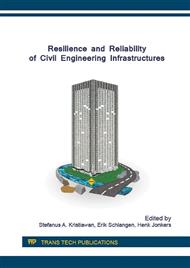p.233
p.240
p.246
p.252
p.259
p.265
p.274
p.283
p.293
Parametric Study on the Influence of Bays Number and Frame-Span Length on the Redundancy Indices of Reinforced Concrete Structures
Abstract:
The role of redundancy in a structure that receives earthquake load is very important. It provides alternative possibilities of load distribution in the event of a local collapse of the system before it reaches the total collapse of the structure. This mechanism of load distribution provides time for the users of the building to escape. A parametric study is carried out to investigate the effect of bays number and frame-span length in order to identify factors affecting the redundancy of the reinforced concrete structural system. Non-linear analysis (pushover) using SAP2000 on three-dimensional structural frames system are performed to obtain the capacity curves of the structures from which redundancies are calculated. Redundancy on the system is determined into two redundancy indices i.e. redundancy strength index (rs) and redundancy variation index (rv) which are, respectively, deterministic and probabilistic measure of the stuctural redundancy. This study points out that frame-span length has more significant effect on redundancy indices compared to the bays number. It is also shown that a reinforced concrete structure with a higher redundancy strength index tends to have a lower redundancy variation index.
Info:
Periodical:
Pages:
259-264
Citation:
Online since:
July 2016
Keywords:
Price:
Сopyright:
© 2016 Trans Tech Publications Ltd. All Rights Reserved
Share:
Citation:


